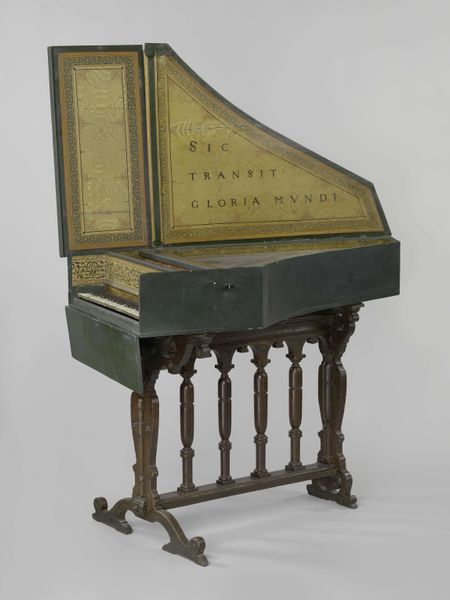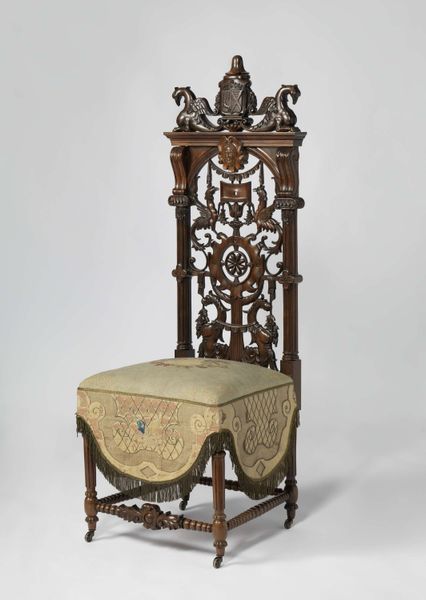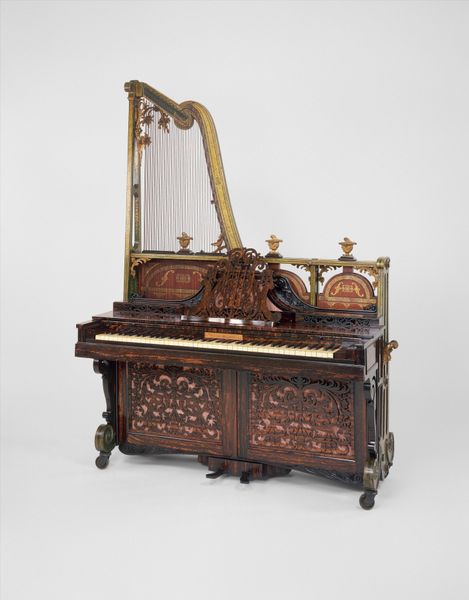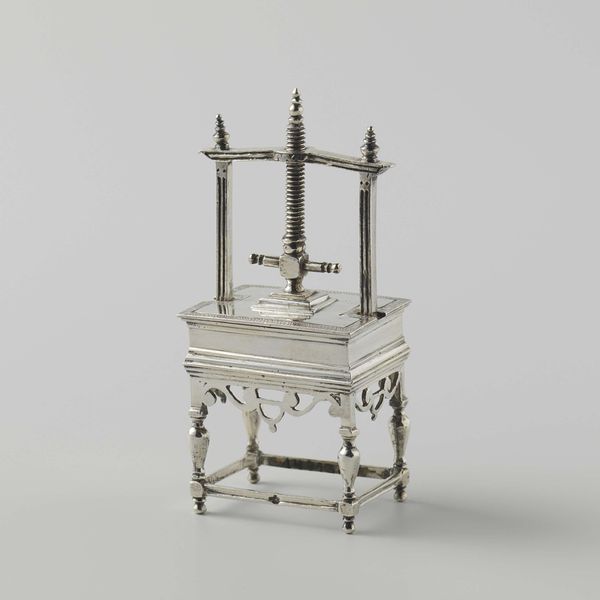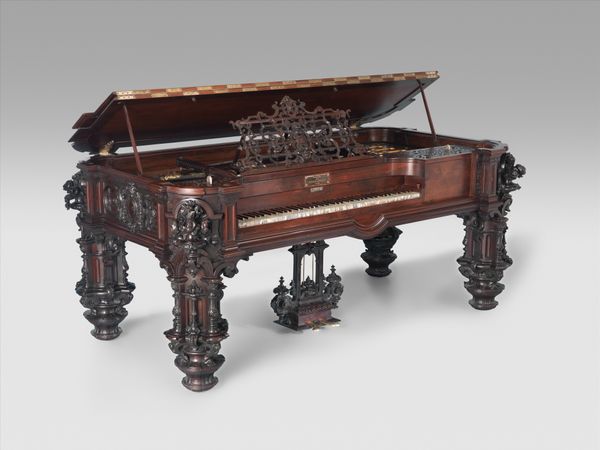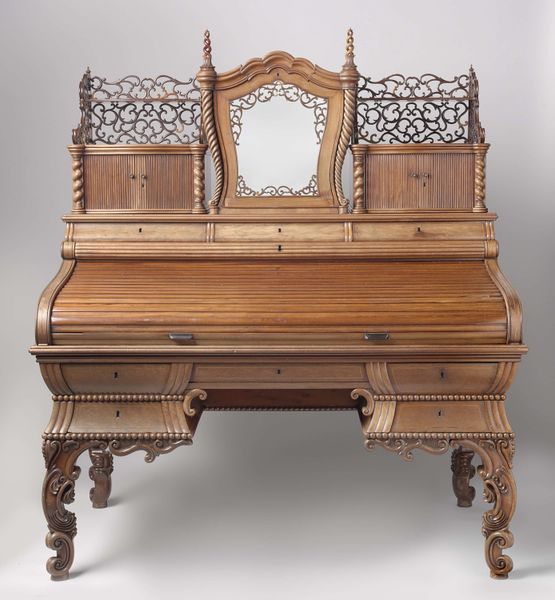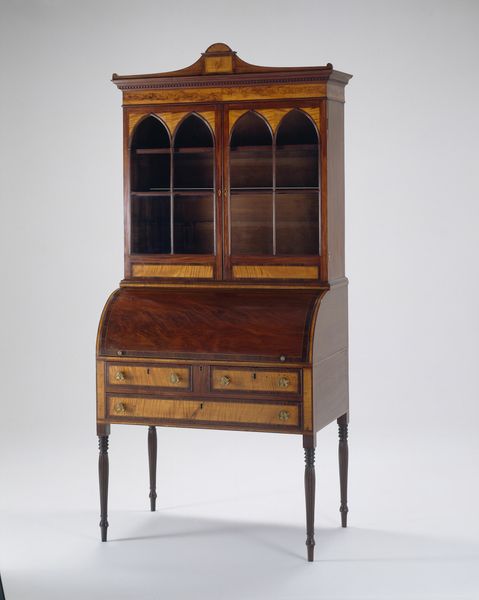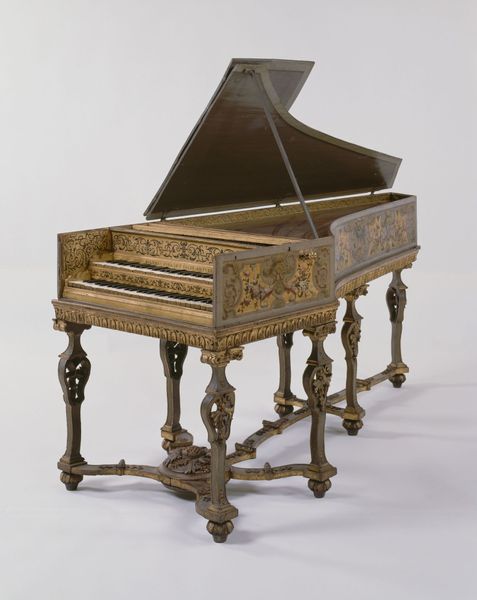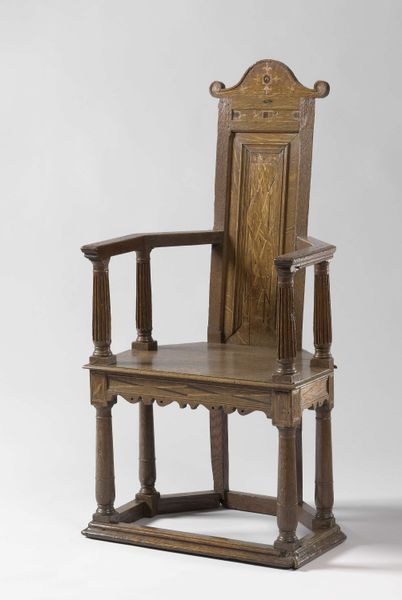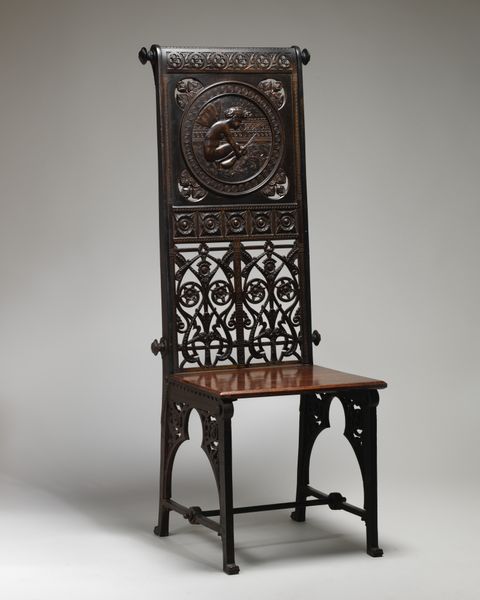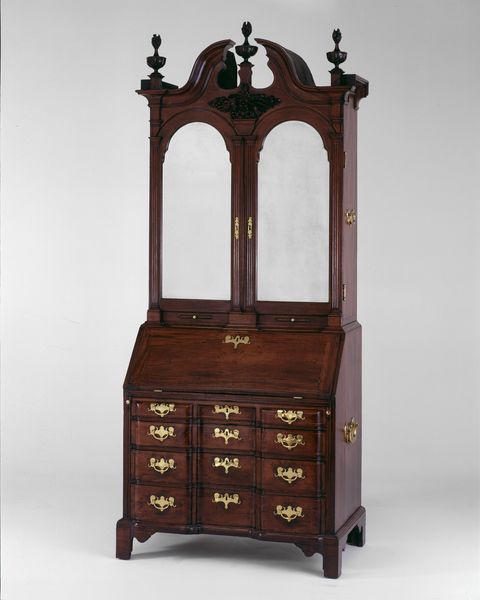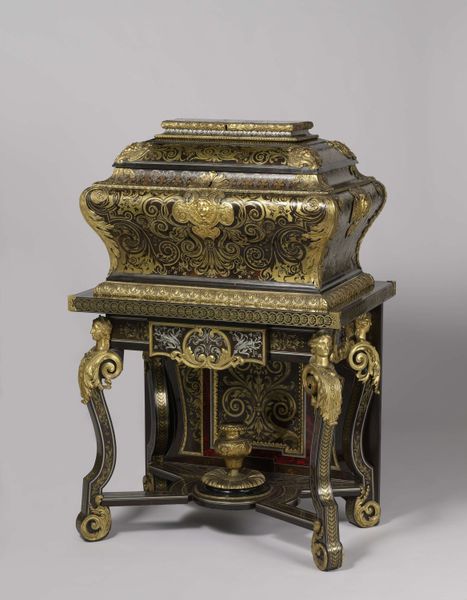
carving, sculpture, wood
#
carving
#
sculpture
#
furniture
#
sculpture
#
ceramic
#
wood
#
decorative-art
Dimensions: 52 1/2 x 19 1/4 x 13 3/8 in. (133.35 x 48.9 x 33.91 cm)
Copyright: Public Domain
This remarkable side chair was fabricated in an unknown time and place out of cast iron. Look closely and you'll notice how the material fundamentally shapes the chair's appearance. Cast iron allows for intricate, decorative detailing, evident in the filigree and ornate patterns across the backrest and seat. The chair’s design merges mass production and historical aesthetics. The choice of cast iron suggests an embrace of industrial manufacturing, enabling the replication of complex forms efficiently. Yet, the Gothic Revival style, with its pointed arches and quatrefoils, evokes a pre-industrial era. This synthesis reflects broader social tensions, particularly the shift from handcrafted goods to factory-made products during industrialization. The chair embodies this transition. It also challenges our conventional distinctions between fine art and craft. It invites us to consider the social and historical context that shapes our perception of design and artistry.
Comments
minneapolisinstituteofart about 2 years ago
⋮
Christopher Dresser, a trained botanist who became one of the first industrial designers in Britain, promoted innovative design available to many social classes through inexpensive, mass-produced objects. The stylized palms and thistles on the back of the chair also appear on the cast-iron coatstand that Dresser designed for Coalbrookdale Company. The trompe l'oeil (fool the eye) tufted seat is recorded on an 1868 design registered by the Masborough Stove Grate Company in England. The spiral turnings on the back stiles and legs, crocket finials, and geometric patterns suggest an assortment of Elizabethan, Gothic, and Renaissance revival motifs in vogue in both America and Europe during the 1860s and 1870s.
Join the conversation
Join millions of artists and users on Artera today and experience the ultimate creative platform.
